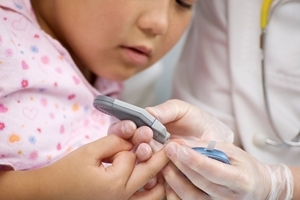In the medical field, healthcare staffing professionals witness leaps and bounds in medical technology every year. Now, technology-controlled organs are no longer just a page out of a fiction novel. The “bionic pancreas,” a device that employs a sophisticated computer program which works together with several diabetes management devices, successfully managed blood sugar levels in its first real-world trials on children and adults with Type 1 diabetes.
A day in the life of diabetes patients often entails insulin injections throughout the day, constant monitoring of glucose levels and carefully planning every single meal they eat. For many, it is a heavy burden. However, the device eliminated such concerns, finally offering a glimpse at a normal life for people with Type 1 diabetes, often called juvenile diabetes.
“[E]veryone in the trial said that burden was all lifted,” study senior author Edward Damiano, an associate professor of biomedical engineering at Boston University and a father of a 15-year-old son with Type 1 diabetes, told HealthDay. “The device is inherently automated – it’s diabetes without the numbers.”
As travel nursing professionals know, diabetes is an autoimmune disease that occurs when the body mistakenly destroys pancreatic cells that produce hormones insulin and glucagon that control blood sugar. In turn, the body is unable to keep the level of energy-providing glucose from becoming dangerously high or low. To counter this, patients with Type 1 must replace insulin through injections or a tiny catheter attached to an insulin pump.
But calculating how much insulin to give is not an easy task. Both too little and too much insulin can be dangerous. The technology-monitored pancreas removed the guesswork from insulin therapy and reduced low blood sugar episodes, the researchers found.
Christopher Herndon, 13, was one of the patients who tested out the bionic pancreas. He sported it while at a special summer camp for kids with diabetes, saying his blood sugar never dropped low enough that he had to sit anything out, and he could’ve skipped regular blood sugar checks had they not been camp policy. After the test period, the eighth grader hated giving the device up.
“It is like a dream for a diabetic,” Herndon told NBC News. “It takes away the responsibility. It takes away the high blood sugar and the low blood sugar. It prevents damage to the body and it makes you feel better all the time.”
Diabetes affects the lives of 371 million people worldwide, according to the Centers for Disease Control and Prevention. In the U.S., about 5 percent of the 29 million people with diabetes have Type 1 diabetes.
Those in medical staffing professions work with people with diabetes every day. They know that when glucose levels jump too high, tiny blood vessels can become damaged, which as a consequence can lead to blindness, stroke, heart disease and kidney failure. Dangerously low levels may cause a patient to pass out and can be fatal.
How it works
The Boston team has been working on constructing an artificial pancreas for years. The first human studies began in 2008, allowing the device to monitor blood sugar and stand in for the finger prick test that people with diabetes must do several times a day. It contains two pumps for the two hormones – insulin and glucagon, and delivers them when needed and in the right amounts.
Moreover, the device included a smartphone with an app that contained the computer program to control the pumps. The phone also wirelessly communicated with a continuous glucose monitor that constantly reported blood sugar levels.
There were no serious low blood sugar episodes in either the teens or adults during the trials.
As for its widespread use, Aaron Kowalski, vice president of artificial pancreas research for JDRF (formerly the Juvenile Diabetes Research Foundation), said it’s not a matter of if, but when. More clinical trials are underway, and he believes the process will move “quickly,” though no specific time frame was given.

